Curriculum Development Cycle
A curriculum development structured should delineate the philosophy, goals, objectives, student competencies, learning experiences, instructional strategies, resources and assessments that comprise a specific educational program. Additionally, it should represent an articulation of what students should know and be able to do and supports teachers in knowing how to achieve these goals.
The development of an effective curriculum is a multi-step, ongoing and cyclical process. The process progresses from evaluating the existing program, to designing an improved program, to implementing the new program and back to evaluating the revised program. This process is carried out in a planned and systematic manner.
The most commonly used curriculum structure is a Graded Structure that organizes objectives by the grade in which a student is enrolled. A graded structure is an organization by unit that groups objectives by main topics and may or may not be of differing difficulty and is most commonly used for middle or high school courses. One of the most important roles of grade-level and course objectives is assuring smooth transitions and curricular coordination among levels, particularly between elementary schools and middle schools, and between middle schools and high schools.
An organizational structural asks essential questions that centers the curriculum on understandings. This method develops assessments and determines criteria of acceptable performance.
Curriculum Development Process
Planning
- Plan all phase of the development process
- Identifying the project personnel and what their duties will be
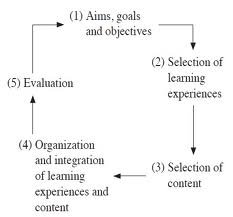
- Identify the project manager
- Define the development and implementation phase process
- Identifying key issues and research in the subject curriculum
- Assess needs
Articulating and Developing Curriculum Format
- Program Philosophy
- Beliefs and Protocols
- Define K-12 Program, Grade-Level and Course Goals
- Description of Subject Learning Environment
- Subject Area Standards
- Assessment
- Materials and Resources
- School to Career Connection
- Information Technology Connection
Developing Grade-Level Course Objectives and Competency Structure
- Evaluate a Graded organizational structure that organizes objectives by the grade in which a student is enrolled.
- Evaluate a Strand organization structure which places all objectives for a specific topic together in a sequential order without regard to specific grade.
- Evaluate a Sequential organization which outlines objectives in a continuous chain without regard for grade level and allows for individual student progress along a continuum of skills and experiences.
Identifying Resource Materials to Assist with Program Implementation
- Identify instructional strategies and resources called Open Educational Resources (OER) to help meet a particular objective or set of objectives.
Assessing and Measuring Student Performance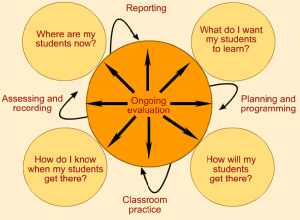
- Develop grade-level criteria tests
- Develop performance based tasks
- Develop course final examinations
- Develop common grade-level course criteria assessments
- Develop clear performance standards
Implementing the New Program into Practice
- Launch pilot program
- Teacher awareness of the new curriculum
- Teacher responsibility sessions
- Teacher classroom conformity time elements
- Curriculum developer evaluation of in-classroom pilot implementation
- Launch actual curriculum program
Evaluating and Updating the New Program
- eBook evolution updates
- Achievement identification of materials, activities, assessments and current student work
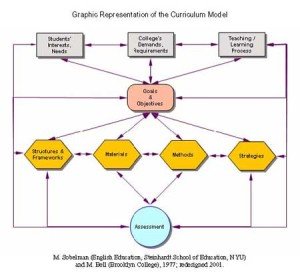 Determining the Success of the New Program
Determining the Success of the New Program
- Pilot effectiveness evaluation and impact of the new program
- Periodically review of actual program strength, weakness and needs perception data
- Evaluation of eBook, materials, or objective preferences that are not working effectively
- Teacher evaluation of assessments, performance tasks, student work, lessons and instructional practices related to the curriculum
- Ongoing grade-level and course criterion-referenced exam data
- Course enrollments particularly by level in middle and high schools
- SAT and AP results
Curriculum Documentation
- Information materials that document the curriculum should be maintained in digital content such as text, forms, tables, diagrams, graphics, images, audio, and video.
- Content items should be stored and managed in a reliable server repository that saves each successive version and a traceable history of changes as material is authored, corrected or revised, and updated.
- Content items should be assembled and published in presentations that suit the various needs of teachers, students, administrators, parents.
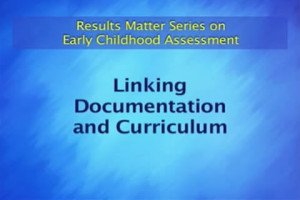
- Multiple presentation modes should be supported, including hard copy print-on-demand, email attachments, Adobe PDF, Microsoft Office documents, and online web pages.
- Online documents should be cataloged, indexed, and cross-referenced to facilitate user searching and retrieval for access to both summary and detailed curriculum documentation as well as for incorporation of curriculum information into personalized teaching/learning material with annotations, ad hoc reports, and studies.
Sample Curriculum Development Cycle
The multiyear curriculum development cycle process should be organized by a master schedule which allows for systematic research, evaluations, revisions, implementation and refinement. Each instructional program should be scheduled on a three to five-year program review cycle, allowing for a balanced student and staff introduction of new materials as well as long-range budgetary planning and funding.
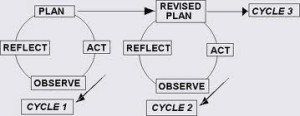 Years 1 and 2 may be combined, depending on the amount of writing and revisions that must be done. Years 4 and 5, Refinement, Documentation and Evaluation, include the continuing development of appropriate instructional strategies and activities. Most evaluation and revision work is done at the beginning of the cycle, with three years of implementation. Curriculum evaluators should be composed of teachers, administrators, and K-12 curriculum directors.
Years 1 and 2 may be combined, depending on the amount of writing and revisions that must be done. Years 4 and 5, Refinement, Documentation and Evaluation, include the continuing development of appropriate instructional strategies and activities. Most evaluation and revision work is done at the beginning of the cycle, with three years of implementation. Curriculum evaluators should be composed of teachers, administrators, and K-12 curriculum directors.
The five-year cycle is defined as follows:
Year 1: Review and Analysis
- Research, review and evaluate existing curriculum
- Conduct an assessment of needs regarding content, strategies, and evaluation by student, teacher, parent, and administrator surveys
- Data consultation to assess student learning needs including results of standardized and locally developed tests, report cards, portfolios, and other evidence of student achievements
- Resources availability assessment for curriculum development and implementation
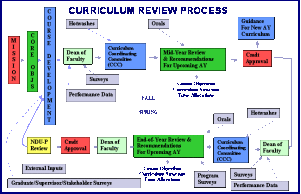
- Federal and state regulation complicity review
- Prioritize curriculum needs and time line specification for curriculum development
- Current field research review and recommendations of professional organizations
- Summarize strengths and weaknesses of current curriculum
- Order sample materials from two or three publishers whose materials most closely match envisioned curriculum
At the end of Year 1, the following documents should be produced:
- Philosophy, mission, goal statements
- Written recommendations as to where existing curriculum is weak
- Evaluation of existing program course
- Content description
- Written development objectives (in matrix form)
- Written evaluations of textbooks designed for teachers to use as evaluation guides during the following school year
Year 2: Program Development
- Write new curriculum
- Rewrite or develop performance objectives and necessary alignment documents to show correspondence with state objectives, testing, measurement methods, and instructional strategies and materials
- Revise and rewrite
- New curriculum and recommended materials are circulated and feedback is gathered and tabulated
- When this phase is complete, a recommendation for new textbooks and materials is made
- Develop and purchase instructional materials
- Field test materials and curriculum
Year 3: Implementation
- Implement new curriculum and materials
- Launch Pilot Program

- In-service is conducted to ensure that teachers understands the new curriculum and can implement the materials into actual classroom practice.
- Feedback is gathered from teachers to evaluate new materials. Instructional strategies may be developed that support implementation.
- Launch actual curriculum program
Year 4: Practice and Documentation
- Refine and modify
- Teacher and parent surveys or other data collection methods may be begun in preparation for the Evaluation Year.
- Program and curriculum update evaluation
- eBook evolution update evaluation
- Identify achievement of materials, activities, assessments and current student work
- Program effectiveness and impact evaluation
- Develop program strength, weakness and needs perception data
- Identify and evaluate eBook, materials or objective preferences that are not working effectively
- Document teacher evaluation of assessments, performance tasks, student work, lessons and instructional practices related to the curricula
- Evaluate ongoing grade-level and course criterion-referenced exam data
- Evaluate course enrollments (by level in middle and high schools)
- Evaluate SAT and AP results
- Prepare for evaluation year in program areas
Yearly Budget Support for Curriculum Textbooks and Materials
In anticipation of curriculum cycle expenditures yearly budget should contain a fixed amount per pupil in each textbook accounts that will be used to purchase newly reviewed and approved textbooks and materials to support curriculum implementation.

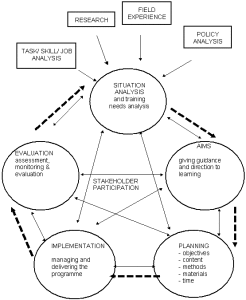
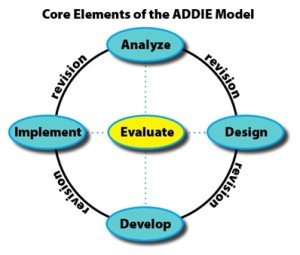
Recent Comments